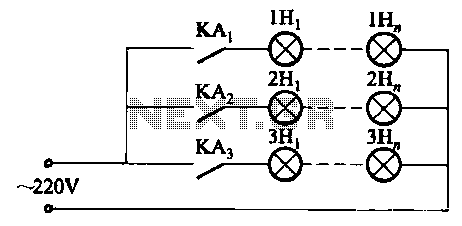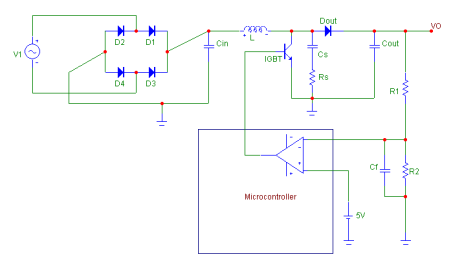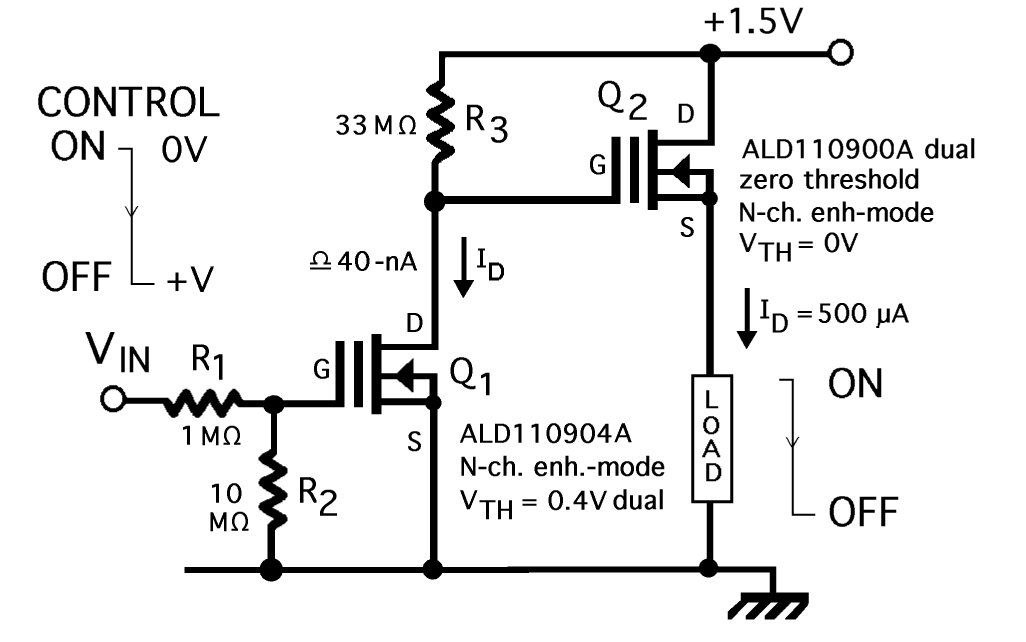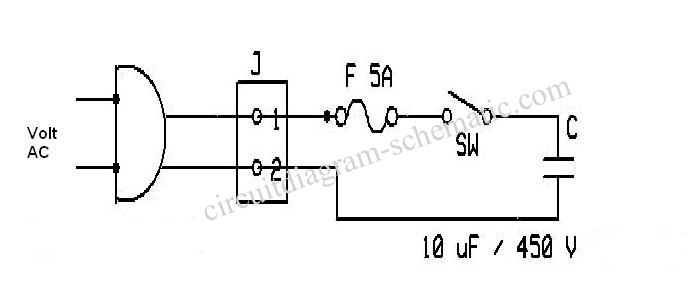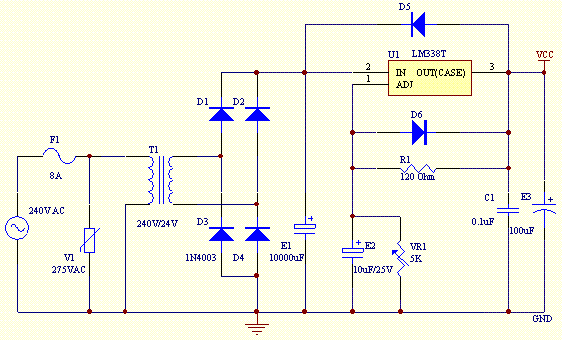
15 ampere adjustable power supply
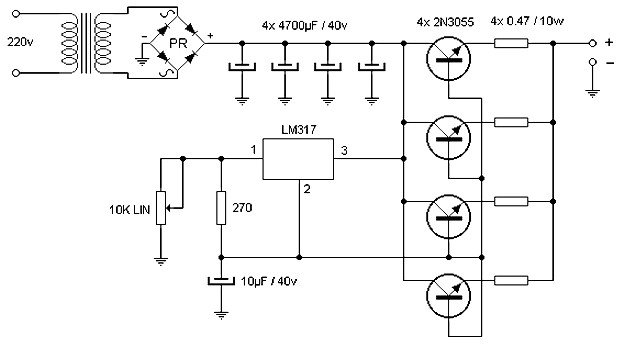
The wiring diagram illustrates that the source delivers a comparable amount of current through the parallel operation of four power transistors, which must be mounted on an effective heatsink. Voltage adjustment is achieved using an integrated LM317, which also requires mechanical dissipation. The schematic diagram is derived from a 15 Ampere Adjustable Power Supply circuit.
The described circuit is a 15 Ampere Adjustable Power Supply, designed to provide a stable output voltage while accommodating varying load conditions. The use of four power transistors in parallel is a critical aspect of this design. This configuration allows for increased current handling capability, ensuring that the power supply can deliver up to 15 Amperes. Each transistor must be mounted on a heatsink to effectively dissipate heat generated during operation, preventing thermal runaway and ensuring reliability.
The LM317 voltage regulator is employed for its adjustable output feature, allowing the user to set the desired voltage level. The LM317 requires a minimum input-output voltage differential to function correctly, typically around 3 volts. Therefore, the input voltage supplied to the LM317 must exceed the desired output voltage by this margin. Additionally, proper bypass capacitors must be placed at the input and output of the LM317 to stabilize the voltage and reduce ripple, enhancing the overall performance of the power supply.
The circuit also includes various passive components such as resistors and capacitors, which play essential roles in setting the output voltage and filtering noise. It is crucial to select components rated for the appropriate voltage and current levels to maintain circuit integrity. The layout of the circuit should minimize the length of the connections between components to reduce inductance and improve transient response.
Overall, this adjustable power supply circuit is suitable for various applications requiring a stable and adjustable output voltage, making it valuable for testing and powering electronic devices. Proper thermal management and component selection are essential to ensure the long-term functionality and performance of the power supply.As is shown in the wiring diagram the source provides similar amount of current through the parallel work of four power transistors, which must be mounted on a good heatsink. The voltage adjustment is performed in integrated LM317, which also must be dissipated mechanically. The schematic diagram come from circuit: 15 Ampere Adjustable Power Suppl y power supply. Go to that page to read the explanation about above power supply related circuit diagram. 🔗 External reference
The described circuit is a 15 Ampere Adjustable Power Supply, designed to provide a stable output voltage while accommodating varying load conditions. The use of four power transistors in parallel is a critical aspect of this design. This configuration allows for increased current handling capability, ensuring that the power supply can deliver up to 15 Amperes. Each transistor must be mounted on a heatsink to effectively dissipate heat generated during operation, preventing thermal runaway and ensuring reliability.
The LM317 voltage regulator is employed for its adjustable output feature, allowing the user to set the desired voltage level. The LM317 requires a minimum input-output voltage differential to function correctly, typically around 3 volts. Therefore, the input voltage supplied to the LM317 must exceed the desired output voltage by this margin. Additionally, proper bypass capacitors must be placed at the input and output of the LM317 to stabilize the voltage and reduce ripple, enhancing the overall performance of the power supply.
The circuit also includes various passive components such as resistors and capacitors, which play essential roles in setting the output voltage and filtering noise. It is crucial to select components rated for the appropriate voltage and current levels to maintain circuit integrity. The layout of the circuit should minimize the length of the connections between components to reduce inductance and improve transient response.
Overall, this adjustable power supply circuit is suitable for various applications requiring a stable and adjustable output voltage, making it valuable for testing and powering electronic devices. Proper thermal management and component selection are essential to ensure the long-term functionality and performance of the power supply.As is shown in the wiring diagram the source provides similar amount of current through the parallel work of four power transistors, which must be mounted on a good heatsink. The voltage adjustment is performed in integrated LM317, which also must be dissipated mechanically. The schematic diagram come from circuit: 15 Ampere Adjustable Power Suppl y power supply. Go to that page to read the explanation about above power supply related circuit diagram. 🔗 External reference
